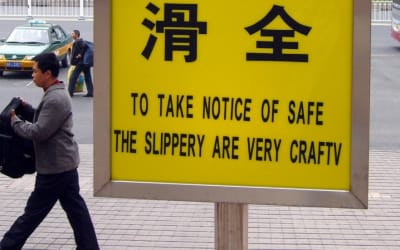Health and safety is not just about ticking the boxes.
If you need to provide information to visitors and contractors it shouldn’t be enough to put it in front of them and get a signature.
Follow these simple steps to get people reading, understanding and staying safe.
1. Think about your audience
Use language that everyone will understand. Consider the sentence structure and check if there is a simpler way to communicate the same message.
Proceed without delay via the nearest safe exit to the Evacuation Assembly Area.
vs.
Exit immediately and safely to the Assembly Area
2. Lists are easier to read than paragraphs
With the information broken down into easy to read and digest sections people can take in more detail.
Proceed without delay via the nearest safe exit to the Evacuation Assembly Area. Remain in the designated Evacuation Assembly Area until the emergency is over.
Please note that there is no smoking whilst assembled at any Evacuation Assembly Area. Await further instructions from the Chief Warden or your designated Area Warden.
Remain there until the ALL CLEAR signal is given.
vs.
1 . Exit immediately and safely to the Assembly Area.
2. Stay there.
3. No smoking in the Assembly Area
4. Wait for further instructions
5. Only leave after the ALL CLEAR signal
3. Do you need to say it?
For example, is it more important that the person knows the instruction or who they are going to receive it from?
Wait for further instructions from the Chief Warden or your designated Area Warden.
4. Include headings
These allow you to guide the reader through the document and provide context.
In the event of an emergency
1 . Exit immediately and safely to the Assembly Area.
2. Stay there.
3. No smoking in the Assembly Area
4. Wait for further instructions
5. Only leave after the ALL CLEAR signal
5. Make use of white space
Just because you can fit everything on to one page, doesn’t mean you should
6. Increase the font size
When you spread the information out you’ll have room to make the font bigger and easier to read.
7. A picture tells a 1000 words
It’s a cliché for a reason. Add symbols to boost your headings, evacuation maps to help people understand where they are and photos of specific hazards you’re highlighting.
8. Make sure the information is relevant
Contractors carrying out work need more information than people going to the boardroom for a meeting.
9. One size doesn’t fit all
The same format and layout that you use for an A4 piece of paper won’t work on a poster. And a poster doesn’t work if you display it on a screen.
You can keep the same information but present it in a way that makes sense to the display method.
10. Don’t double up
If you find other health and safety information or a format that is really effective don’t be afraid to replicate it. Templates can give you a great starting point that you can customise.
Want to see how VisitorRego customers are using these guidelines to create meaningful health and safety information that people read?
Get in touch today and we’ll send you some examples.


Recent Comments